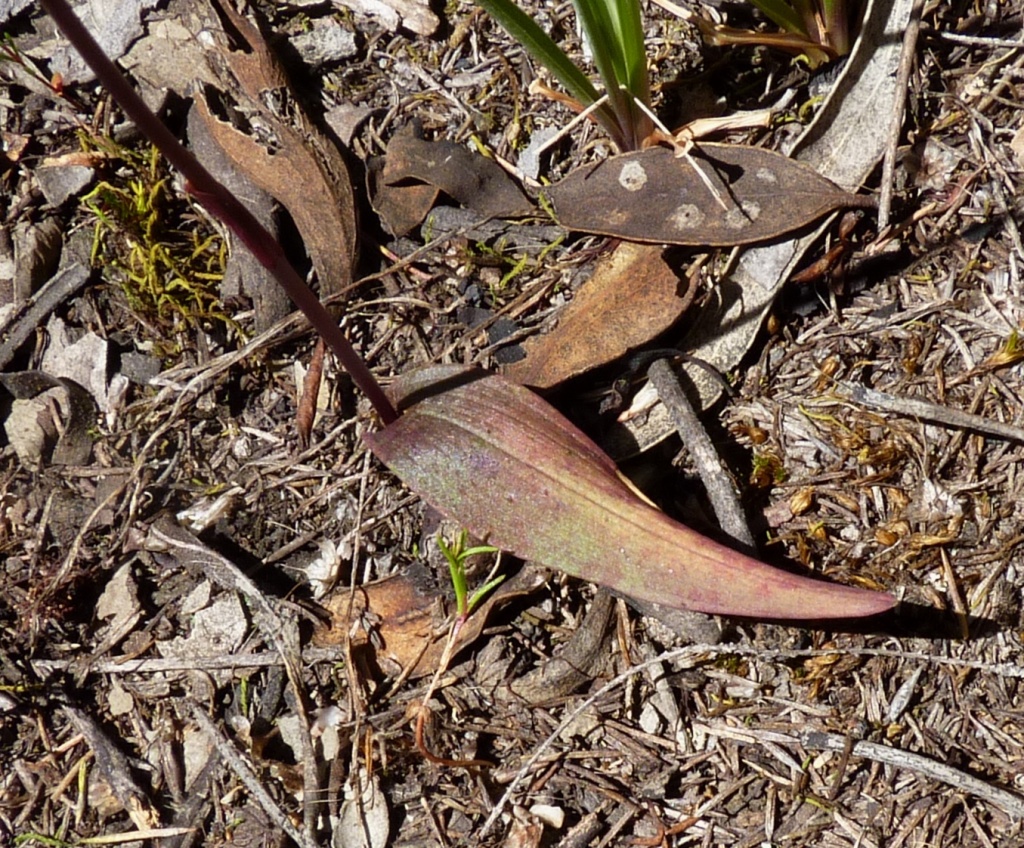Caleana
Terrestrial glabrous herbs, arising from ovoid tubers. Leaf solitary, basal, linear, narrow-lanceolate or ovate; flowering stem erect, with or without a sheathing bract near base. Flowers usually somewhat reddish to strongly reddish pink, or greenish, 1–few on slender pedicels, subtended by a loosely sheathing acute bract, labellum uppermost; perianth segments linear; dorsal sepal slightly incurved behind column; lateral sepals reflexed; petals deflexed against side of column. Labellum articulate with foot of column, on movable claw attached somewhere near middle of lamina back; lamina ovate to ovoid, convex, upper surface smooth or variously glandular. Column elongate, at c. 90 deg., or appressed, to ovary, broadly winged along entire length, sometimes on to the column foot as well; column closed by labellum when claw is irritated.
A genus of about 15 species confined to southern Australia, 3 species in Victoria.
The results of molecular studies suggest that Paracaleana and Caleana are congeneric (Miller & Clements 2014). As the latter name is older it must take priority.
Entwisle, T.J. (1994). Orchidaceae. In: Walsh, N.G.; Entwisle, T.J., Flora of Victoria Vol. 2, Ferns and Allied Plants, Conifers and Monocotyledons, pp. 740–901. Inkata Press, Melbourne.
 Spinning
SpinningSynonyms
Miller, J.T.; Clements, M.A. (2014). Molecular phylogenetic analyses of Drakaeinae: Diurideae (Orchidaceae) based on DNA sequences of the internal transcribed spacer region. Australian Systematic Botany 27(1): 3–22.



